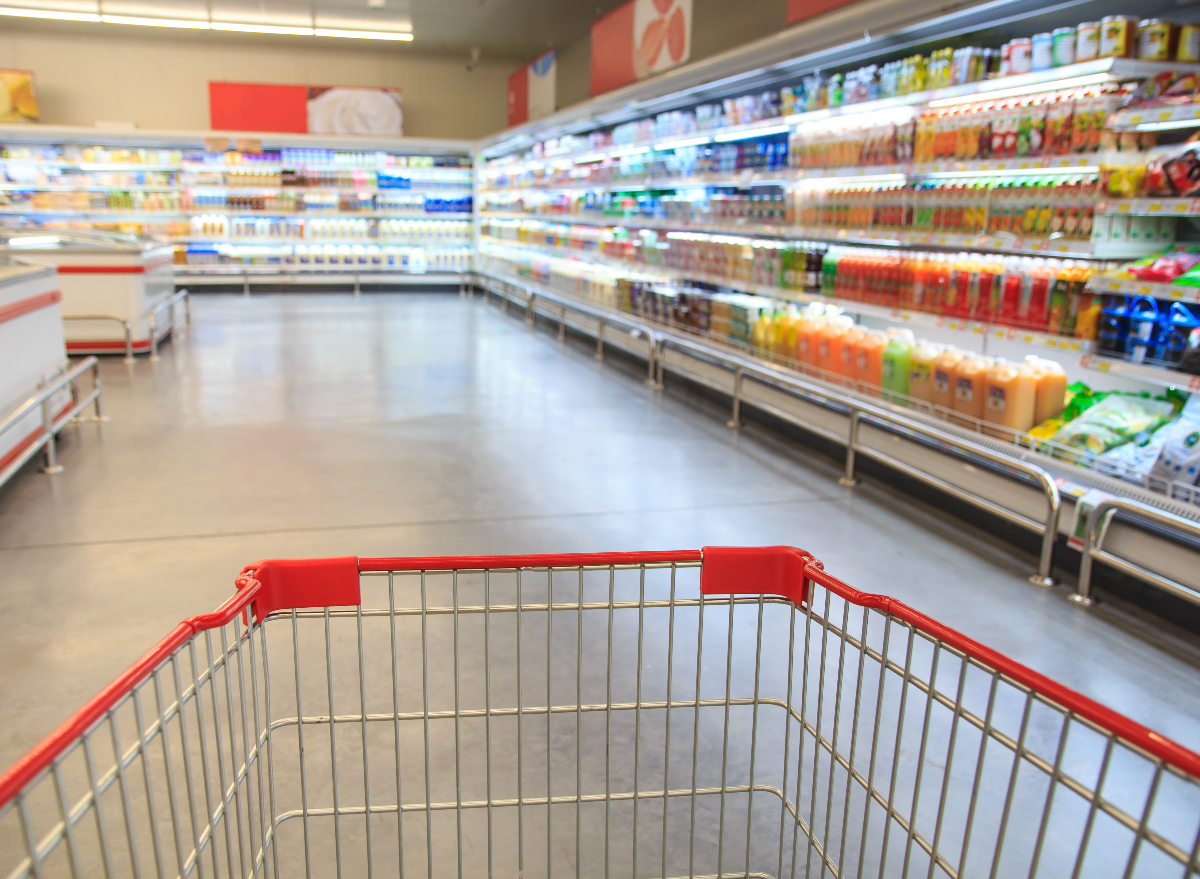Prices in This Grocery Aisle Are Now 32% Higher Than Last Year

Here's a fact that will surprise no one: Prices increased in 2022. It's been a tough year all around for household budgets, but the financial strain brought on by inflation is especially apparent at grocery stores and supermarkets all over the country.
Food prices are up across the board. For instance, according to new Consumer Price Index (CPI) data released last week, the price of coffee was over 15% higher in September 2022 compared to September 2021. Similarly, poultry prices have jumped over 17% year over year.
Still, no staple has experienced a steeper year-over-year price increase than butter and margarine. The U.S. Bureau of Labor Statistics reports the prices of butter, margarine, and similar spreads jumped an astounding 32.2% between September 2021 and 2022. Individually, butter prices increased 26.6% and the price of margarine swelled by 44%.
A staple across countless recipes and dishes, butter is about as essential in the kitchen as a pan and stove. Troublingly, CNBC reports the exorbitant prices seen on store shelves today may not be dropping anytime soon.
"All the costs that go into producing a stick of butter, all those costs have risen," Matt Herrick, a spokesman for the International Dairy Foods Association, told the outlet.
On a broader scale, the CPI's "food at home" category, which encompasses all grocery prices, increased by 13% in comparison to the same time in 2021. Food inflation levels haven't been this high since 1979.

So, what's behind this incredible surge in food prices, especially butter and margarine? There's no one easy answer to that question. Multiple factors including the rising cost of labor, higher shipping costs, and the war in Ukraine have combined to push prices higher and higher this year.
It takes about 21 pounds (2.5 gallons) of milk to create a pound of butter. Unfortunately, milk production has declined on a global scale this year. Major milk producers, such as Australia, New Zealand, and the European Union, have reported lower rates of milk output in 2022.
"Since the end of 2021, global milk supplies have tightened, propelling prices for manufactured dairy commodities higher," the U.S. Agriculture Department wrote in a report earlier this year.
Meanwhile, vegetable oils (soybean, sunflower, palm, and rapeseed oils) are an integral ingredient when making margarine. Ukraine is the world's #1 producer and exporter of sunflower oil (the sunflower is even Ukraine's national flower), and the Eastern European nation accounted for 31% of global sunflower oil production in 2021. This year, however, the war brought to Ukrainian soil by Russia in February has disrupted production considerably.
Recent vegetable oil woes don't end with Ukraine. Canada is the world's biggest exporter of canola oil, but recent droughts have resulted in a 35% lower Canadian canola oil yield in both 2021 and 2022. Meanwhile, Brazil, the largest exporter of soybeans, reported 14% less production last year due to weather caused by La Niña.
Of course, the impact of Russia's invasion of Ukraine extends far beyond sunflowers. The price of oil, and oil byproducts like gasoline and diesel, has swelled this year as well. The greater "energy" category in the latest CPI report shows an annual price increase of nearly 20%.
U.S. wages and salaries have also increased at the fastest pace seen in decades. While that's generally a positive, it also means labor costs tied to food production and distribution must rise, eventually leading to higher prices on store shelves.









